ASIC Miner ICERIVER KAS KS0 Profitability In the realm of cryptocurrency mining, the Iceriver KAS KS0 miner has garnered widespread attention. Tailored specifically for the Kaspa network's KHeavyHash algorithm, it boasts high hashing power and low power consumption, making it an ideal choice for many miners. In this article, we will comprehensively assess IceRiver KS0 profitability while considering the Kaspa market conditions and the attributes of KS0 miner. Kaspa Market Dynamics Kaspa is a vibrant cryptocurrency network aimed at delivering high performance and scalability for everyday transactions. At the time of writing this article, the Kaspa coin trades at approximately $0.04959. But it's essential to note that cryptocurrency markets are highly susceptible to price volatility. Hence, investors must remain vigilant about market dynamics. Additionally, the Kaspa network's mining difficulty and reward mechanisms play a role in mining returns. Attributes of the IceRiver KS...
Antminer L3+ Litecoin Miner Evaluation
In December 2016, Bitmain launched the L3 Litecoin miner, and the L3+ upgrade version will be launched in just 3 months.
Antminer L3+ Specifications:
Miner hash rate | 504M/S |
Wall power consumption | 800W±10% (Bitmain APW3-1600W power supply, AC/DC 93% efficiency, 25℃ ambient temperature) |
Power Efficiency | 1.6J/MH ±10% (Wall, AC/DC 93% efficiency, 25°C ambient temperature) |
Input voltage | 11.6~13.0V |
Number of chips | 288PCS |
Number of hash boards | 4PCS |
Size | 352mm(L)*130mm(W)*187.5mm(H) |
Weight of the whole miner (without packaging) | 4.4kg |
Operating temperature | 0°C to 40°C |
Working humidity | 5%RH-95%RH, non-condensing |
Internet connection | Ethernet |
Noise | 75dB |
Power connection | It is recommended to use an independent power supply to miners. In the non-independent power supply, the 4 hash boards can be connected to different power supplies. Still, each hash board cannot be connected to multiple power supplies, and the hash board is guaranteed to be powered on at the end. |
Next, let's experience the performance and usage evaluation of L3+ miners.
Miner appearance
As always, the industrial-grade packaging is printed with logistics and storage logos and product barcodes outside the packaging. When the packaging is opened, the miners are wrapped with shock-proof and anti-collision bubble wrapping pads to ensure the safety of miners' transportation.
Miner size: 465mm * 215mm * 305mm(outer packaging)
L3+ product all-round detail pictures
In the top picture, you can see that there is a control board on the left side of the picture, there is a 6pin port power interface on the control board, and there are 4 hash boards on the right side; each hash board has 2 6pin port power connectors, all of these power connectors must be connected to a power source.
The top of the miner contains the production code and control board.
The front picture shows air outlet fans, the Antminer L3+ logo, network cable interface, the status indicator (green status works, red is abnormal), etc.
Side view of the miner; after removing the air inlet fan, we can see 4 hash boards.
Installation test:
This review uses an APW5-12-2600-A2 power supply.
Tools used in this test:
Including Antminer L3+, APW5-12-2600-A2 power supply, power tester (measure the power during operation), infrared thermometer (measure the temperature of the power board during operation), and decibel meter (measure the noise during operation).
Power on the miner, connect all 9 6pin ports of the hash board and the control board. Note that there is no switch on the APW5-12-2600 power supply, and it can run immediately after turning on the power supply.
Connect the network cable to the miner, and connect the other side to the router. The following picture shows the effect of all connections.
Run miner
Turn on the power supply and start running the miner. It will take a while to start up. The sound will be loud during the startup process, and the sound will become quieter during operation. It takes 1-2 minutes to start up. When the indicator light of the miner turns green, it means that the miner is working normally.
Configure the miner
First, we need to find the IP address of this miner; there are two ways:
1. Through the IP scan tool;
2. Enter the router to find the device that is being connected to the Internet (the ant device is generally recognized as antminer);
We use a relatively simple router search method. After finding the IP address of L3+, we enter the IP address in the browser to access it. After a successful connection, the login password will be prompted to be rooted by default.
After entering, will display the following login interface:
On the overview page, we can see the general information of the miner, such as the miner model, miner version, etc.; switch to the Miner Configuration tab to configure the miner information.
On the mining pool configuration page, we can see the information of three mining pools; the second and third are backup mining pools. When pool1 fails to work correctly, it will automatically switch to pool2 for mining. It is recommended to configure the miner to the official ant mining pool (https://v3.antpool.com/home). After configuration, restart the miner and re-enter the Miner Status page to check the operational status of the miner.
This page will display the real-time hash rate status of the miner, the connection status of the mining pool, the operational status of the hash board (L3+ has four hash boards, and the information of each hash board will be displayed), as well as the fan speed information, etc.
Test
The miner runs the pre-run noise test, and the indoor noise test is 52 decibels.
The noise test result within 5m during operation is 65.1 decibels.
After running smoothly, the measured power is 775.99W, and the official power is 800W, which is lower than the official power.
Backstage real-time hash rate.
The real-time hash rate is 503MH/S, which is not much different from the official website parameter 504MH/S.
The backstage sees the hash board temperature in the 53-63°C.
We used an infrared thermometer to test the temperature of the air inlet hash board at 44.9°C.
The 12-hour average hash rate is around 520MH/S.
Summary:
Antminer L3+ has always continued the excellent quality of Antminer, with simple configuration, stable operation, efficient hash rate, and low power consumption. The results of this test are as follows:
Average hash rate | 520MH/S |
Air outlet temperature during the mining operation | 44.9 ℃ |
Pre-run noise test | 52 dB |
Running noise test (at 5 meters) | 65.1 dB |
Mining runtime power | 755.9 W |
The content and pictures of this article are from the Internet, compiled and edited by ZEUS MINING.
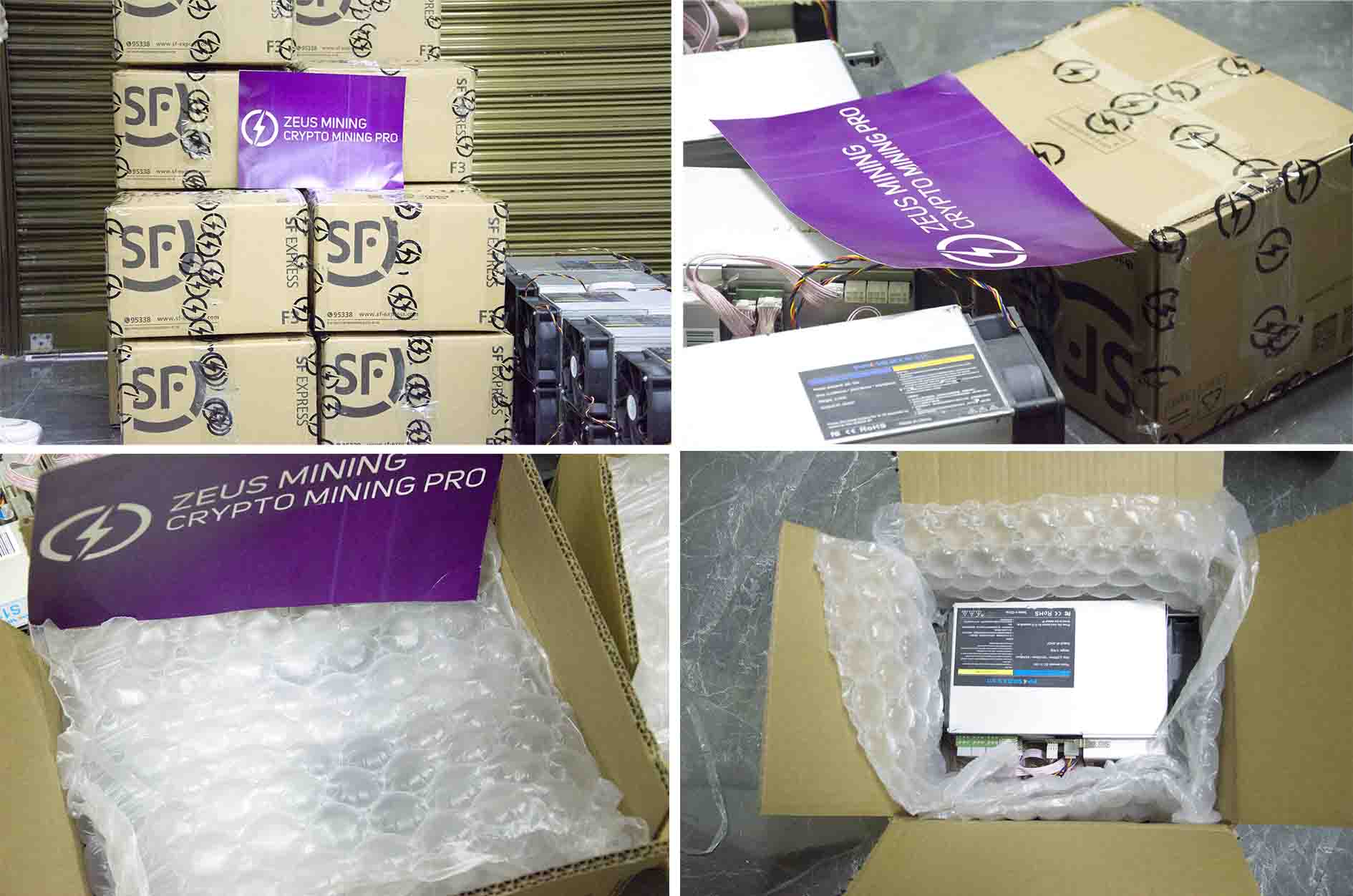




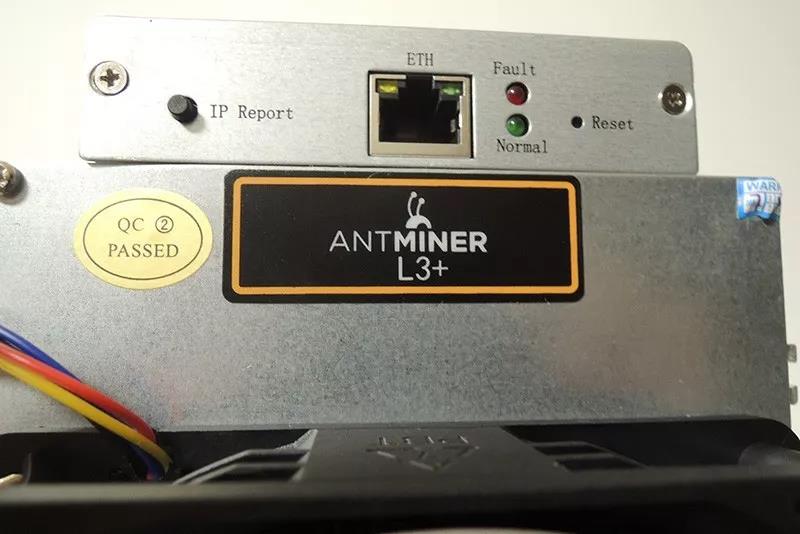





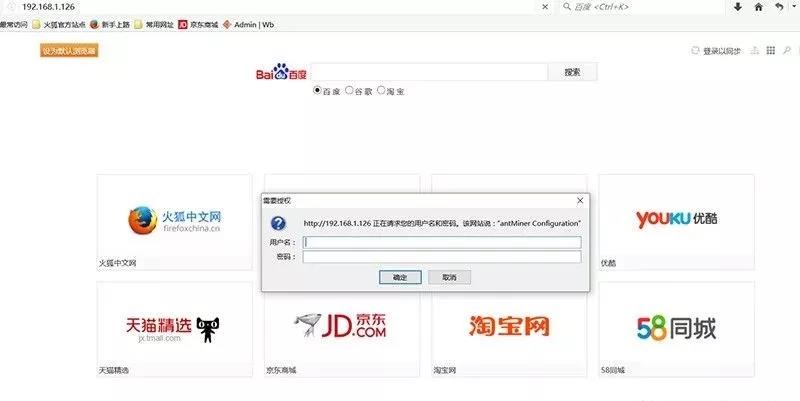

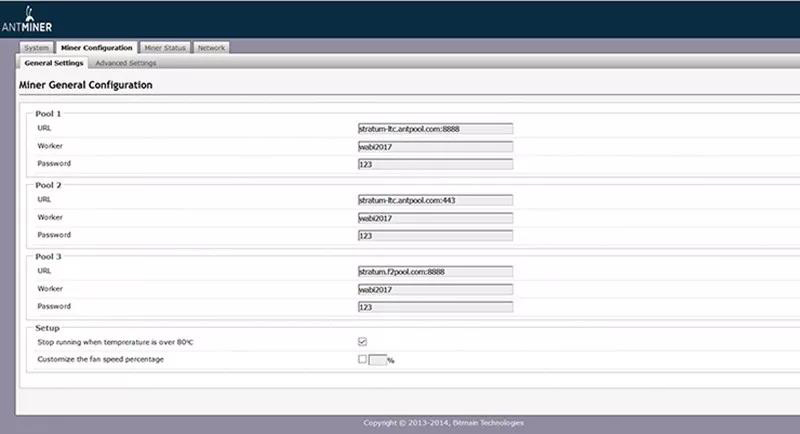


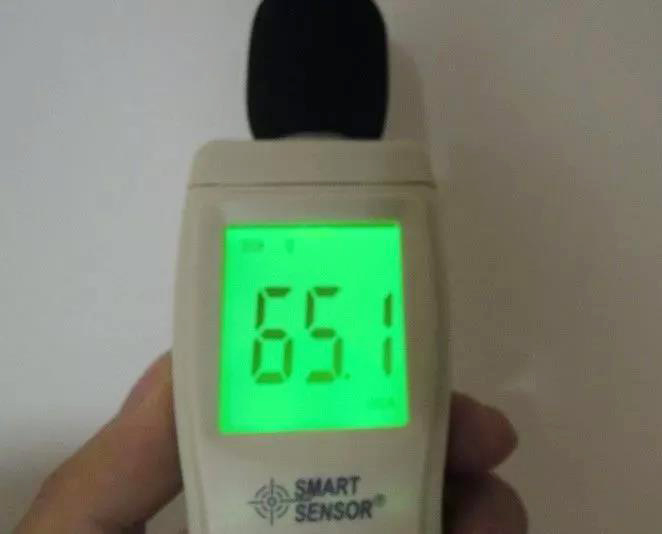

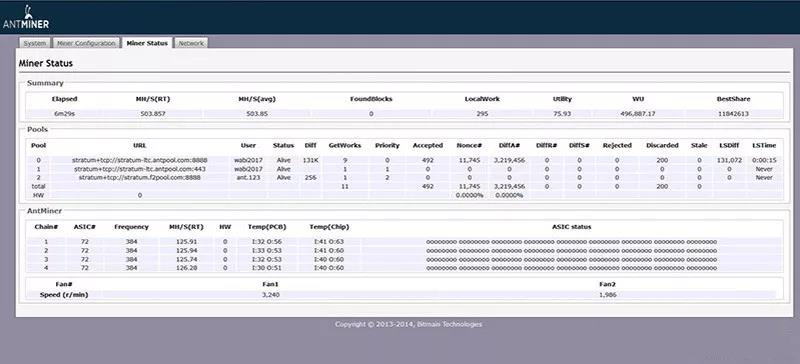

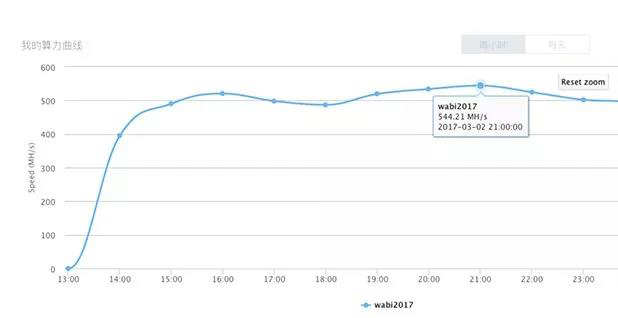

Comments
Post a Comment
Tell us your opinion